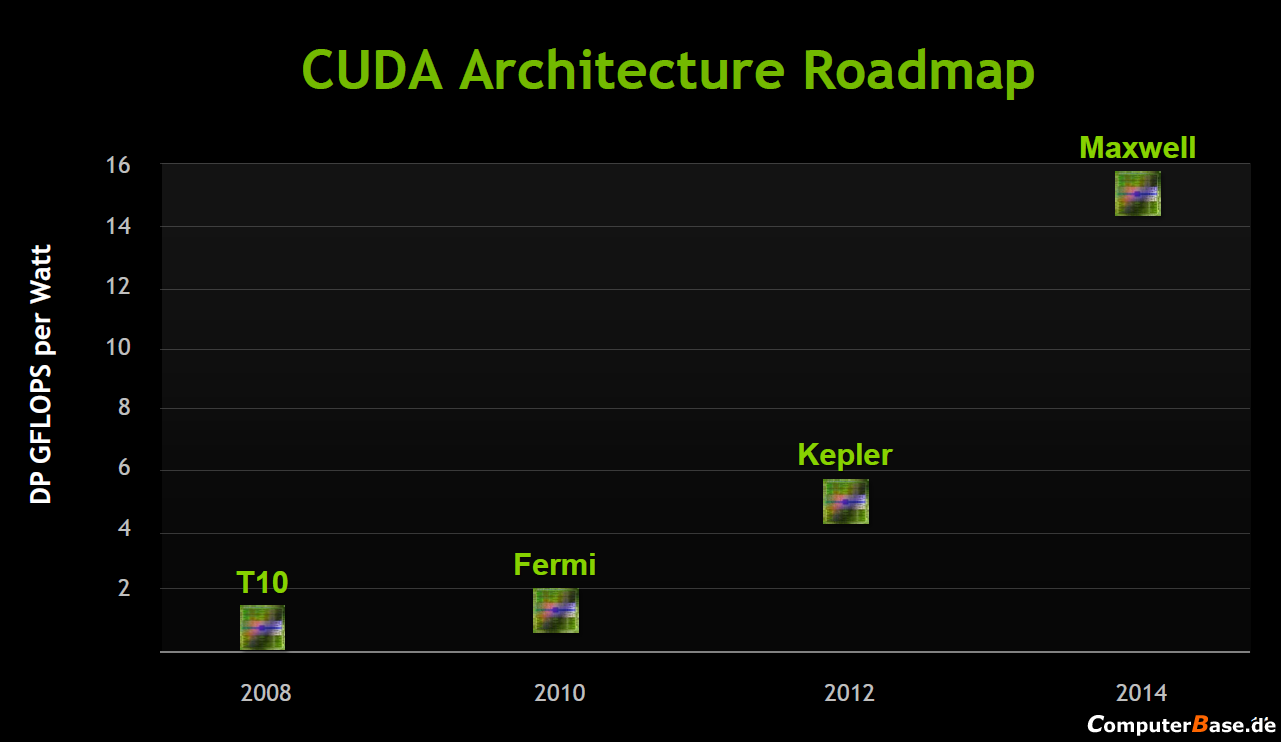The S10000 is 3.94Mflops per W. 2xGPUs
Telsa K20X is 5.57Mflops per W. 1xGPU
It's not Mflops/w, but
Gflops/w.
For example, K20X => 732mhz x 2688 SP x 2 Ops/clock / 1000 = 3935
Gflops
Then to get DP divide by 3 => 1311
Gflops
Then to get per Watt divide by 235W => 5.58
Gflops / Watt
Anyway your and ShintaiDK's comparison mysteriously focuses ONLY on double precision performance. Not all apps use double precision - hence the reason for K10's existence.
SP
S10000 = 15.8 Gflops/w
K10 = 20.4 Gflops/w
K20 = 15.7 Gflops/w
K20X = 16.8 Gflops/w
Outside of superior Glops/watt, other reasons NV is dominating HPC are:
1) Software integration - CUDA
2) Customer relationships - NV created GPGPU industry
3) Technical expertise / support
4) AMD is only now entering this space - can't expect Cadillac ATS to overthrow a BMW 3 series that has established itself for a long time in a particular segment.
It is true that Kepler has superior performance/watt no doubt, but it took a 7B transistor chip to barely beat a 4.3B chip in compute (although NV gimps its consumer GPUs, which means GTX680 is hopelessly outclassed in Compute in the consumer space for games/distributed computing projects):
A 4.3B HD7970 Ghz @ 1050mhz on a 365mm^2 die, with 250W TDP:
SP = 4.3 Tflops
DP = 1.08 Tflops
Asus Matrix $499 @ 1300mhz:
SP = 5.3 Tflops
DP = 1.33 Tflops
K20X > $3,200 (seen estimates of $4-5K):
SP = 3.94 Tflops
DP = 1.31 Tflops
If you just compare it on paper, for us consumers, we need to spend $3000-5000 on an NV card that offers comparable compute performance to a $500 Asus Matrix (of course I realize professional compute differs from consumer compute but for us distributed computing guys, ECC is irrelevant). The hardware power is not that impressive given the size of the chip. What's impressive is that they built a 7B chip and their DP performance is 1/3 of SP, not 1/4th like it is for GCN.
What really happened is NV's engineers took a better approach and outsmarted AMD's by going with more shaders @ lower clocks vs. less shaders @ high clocks. That was a good engineering move by them after Fermi. Also, NV once again had the balls to build a large monolithic die - a 7B transistor chip, with a die size of 520+ I bet. Still, on a compute performance/mm^2, AMD's 10-months old chip offers
a lot more compute performance. With HD8970 series, if it has 2560 SPs, it will easily overthrow K20X in both SP and possibly even DP.
Again to me, what's most impressive here is that NV actually built a 7B chip. That's :thumbsup::thumbsup: because it increases the possibility for GK110-based GTX780. As far as compute performance goes, given the size of the chip, it's not impressive per say unless we take power consumption into account. Even then at 235W, this chip has lower SP performance than a 250W TDP HD7970 Ghz. And we all know that HD7970 Ghz doesn't use 250W of power at load.
Comparing AMD / Intel and NV on theoretical FLOPS also misses the point since that doesn't tell us the real world throughput in any particular app. With features like Hyper-Q and Dynamic Parallelism, NV could be 3-5x faster if a particular app takes advantage of these features and runs way faster with CUDA support (we've seen this scenario play out with Quadro vs. anything AMD throws at them). Really, the more important aspects for professional compute are not just theoretical #s but software/application support, ability to meet specific client's needs, technical support/expertise, etc. That's where NV excels and they should since they have invested millions of dollars into HPC compute while AMD is only now taking this space seriously.
If NV can improve yields and 28nm node matures even more by next year, if they can launch an 850-875mhz GK110 2688 SP with a 250W TDP, it would be a monster for sure. Of course we know NV is going to cripple its DP performance for us consumers anyway just like it has done every single generation in its existence.
Seeing how NV met its target of 3x increase in DP Gflops / watt with Kepler over Fermi, things are looking exciting for Maxwell. In 2-2.5 years, K20X is going to look like a toy based on NV's roadmap.

It's definitely exciting to see GPUs become far more important in the world outside of games.



